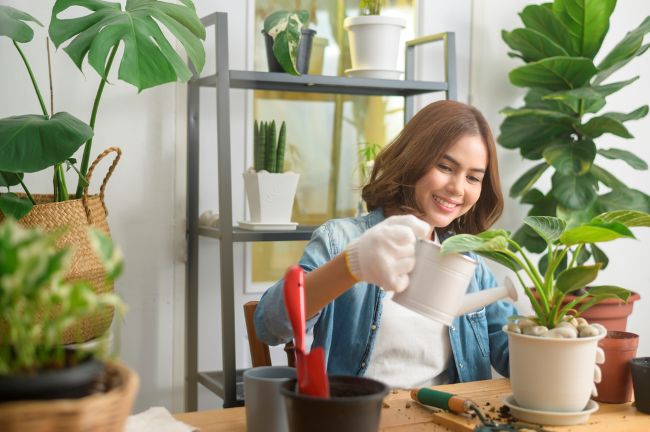Growing and Caring for Houseplants in John Innes Compost

Houseplants are a wonderful addition to any home, bringing life, colour, and fresh air to your living spaces. However, to ensure they thrive, providing the right growing medium is essential. One popular choice for growing houseplants is John Innes compost, a specially formulated blend designed to provide plants with the necessary nutrients and structure for optimal growth. Understanding how to use John Innes compost effectively can make all the difference in cultivating healthy, thriving plants.
What is John Innes Compost?
John Innes compost is a type of soil-based potting mix, unlike many peat-based mixes commonly used for houseplants. It is made up of a blend of loam, peat, and grit or sand, which provides good aeration and drainage while retaining moisture. The compost is available in several different formulations, each designed for specific types of plants:
- John Innes No. 1 – A light compost for seedlings and young plants.
- John Innes No. 2 – A medium compost for established houseplants, offering a balance of nutrients.
- John Innes No. 3 – A rich compost for mature plants that require more nutrients.
Each of these types is enriched with fertilisers that provide long-term nourishment, making it easier to care for your plants without frequent re-potting.
Why Choose John Innes Compost for Houseplants?
- Balanced Nutrients: John Innes compost contains a mix of nutrients, including potassium, phosphorus, and nitrogen, to ensure plants receive a well-rounded diet. This helps your houseplants grow strong and healthy over time.
- Improved Moisture Retention and Drainage: The loam content in John Innes compost allows it to retain moisture, while the grit or sand ensures proper drainage. This balance helps prevent root rot caused by waterlogged soil, making it an excellent choice for most houseplants.
- Structure and Stability: Unlike lighter, peat-based composts, John Innes provides a stable structure that prevents the soil from breaking down too quickly, meaning you don’t need to re-pot as often. This is ideal for houseplants that prefer to stay in the same pot for longer periods.
- Adaptability for Different Plants: Because John Innes comes in different formulations, it’s easy to select the right one for your plants, whether you’re growing cacti, tropical plants, or flowering houseplants.
How to Use John Innes Compost for Houseplants
- Choosing the Right Type: Select the correct John Innes compost depending on the age and type of plant. For most houseplants, John Innes No. 2 is a safe choice, as it offers a balance of nutrients without being too rich or heavy.
- Repotting: When it’s time to repot your houseplants, ensure the new pot is slightly larger than the previous one, with good drainage holes. Gently remove the plant from its old pot, loosening the roots if they are root-bound. Add John Innes compost to the new pot and carefully place the plant inside, filling around the roots with more compost. Water thoroughly to help the plant settle.
- Watering: While John Innes compost holds moisture well, it’s important not to overwater your plants. Allow the top inch of the compost to dry out between waterings to prevent root rot. Always check the moisture level before adding more water.
- Fertilising: John Innes compost already contains a balanced fertiliser that will feed the plants for several months. However, if your plants are actively growing or you’ve noticed a reduction in growth, you can supplement with a liquid houseplant fertiliser, following the manufacturer’s instructions.
- General Care: Beyond the compost, proper light, humidity, and temperature are essential for houseplant care. Most houseplants prefer indirect light and consistent warmth. Keep the plants away from drafts and direct heat sources like radiators or heaters.
Benefits of John Innes Compost Over Other Potting Mixes
- Reduced risk of disease: The soil-based nature of John Innes reduces the risk of over-watering and the diseases that often accompany it. Peat-free alternatives can sometimes be more susceptible to fungal infections or pests, but John Innes’ natural composition makes it a safer choice for houseplants.
- Sustainability: Some John Innes products are peat-reduced or peat-free, making them a more sustainable option compared to traditional peat-based mixes. This can be beneficial for eco-conscious gardeners who want to reduce their environmental impact.
Common Plants That Thrive in John Innes Compost
- Ferns: Many ferns, such as Boston ferns and maidenhair ferns, do well in the moisture-retaining properties of John Innes compost.
- Succulents: While these plants prefer drier soil, John Innes No. 1 or No. 2 mixed with sand or perlite can be ideal for creating a well-draining medium for succulents like aloe and jade plants.
- Spider plants: Known for their ease of care, spider plants grow well in John Innes No. 2, benefiting from the compost’s balanced nutrient content.
- Peace lilies: These tropical plants thrive in the slightly richer, moisture-retaining environment provided by John Innes No. 2 or No. 3.
Conclusion
John Innes compost is an excellent choice for growing and caring for houseplants, thanks to its balanced nutrient profile, moisture retention, and structure. By selecting the right type of compost for your plants and following basic care guidelines, you can create a thriving indoor garden that brings beauty and tranquillity to your home. Whether you’re a novice or an experienced plant enthusiast, John Innes offers a reliable foundation for successful houseplant care.